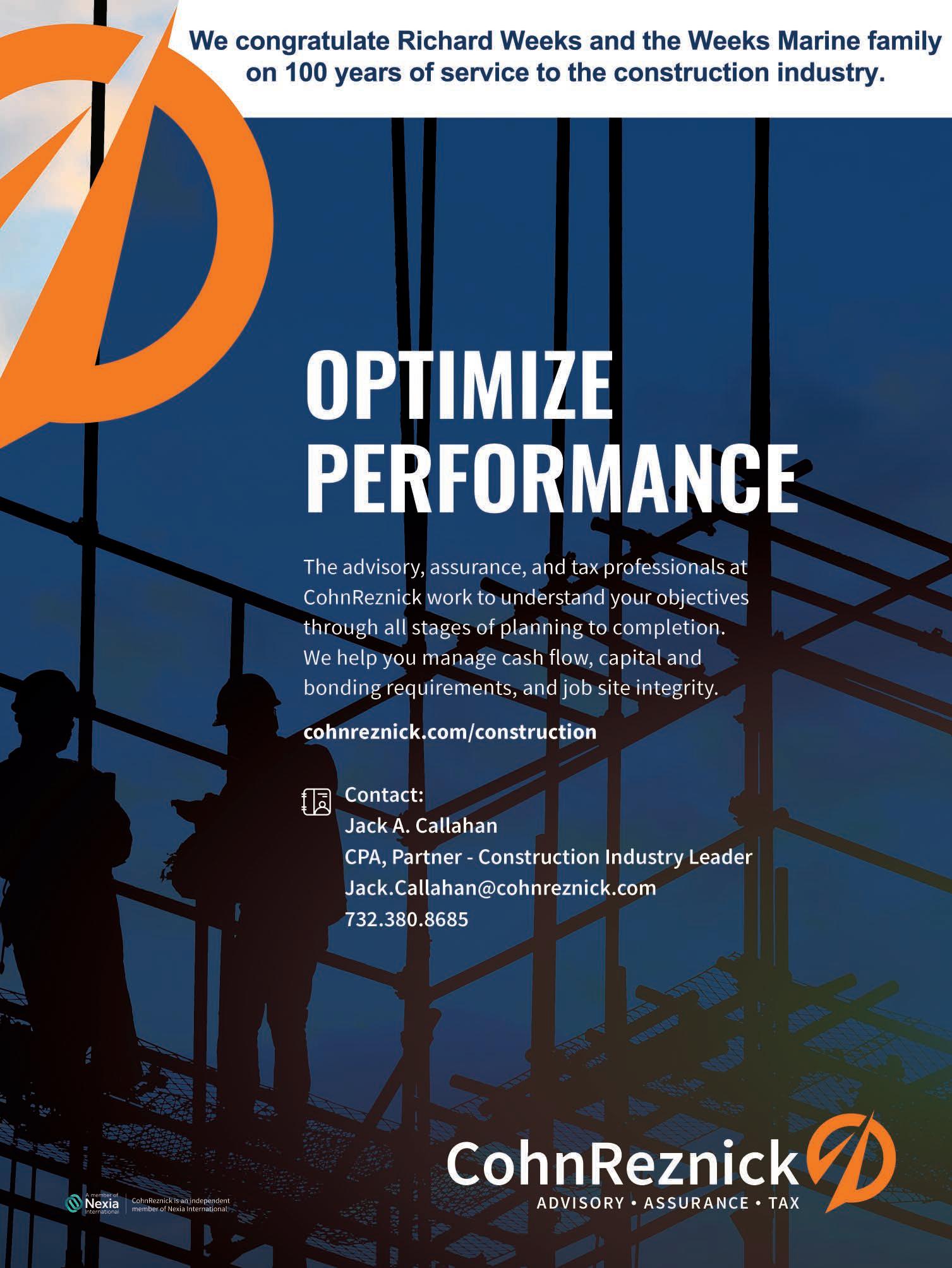
5 minute read
Legal Dig
CONTRACTUAL CONSIDERATIONS OF THE CORONAVIRUS By: adrienne l. isacoff, Florio Perrucci Steinhardt Cappelli Tipton & Taylor LLC
The extent of the COVID-19 outbreak and its effect on the United States and international economy continues to expand exponentially. The construction industry is already experiencing very difficult ramifications and should be as proactive as possible to meet the challenges ahead.
Force Majeure Clauses
Almost all construction contracts include a force majeure clause which relieves a party impacted by some extreme condition from having to perform their contractual obligations. Typical force majeure clauses include “acts of God” such as hurricanes, tornadoes, earthquakes, and wildfires, as well as man-made events like riots, wars, and terrorism. To be classified as a force majeure event, the event must be beyond the control of the contracting party, it cannot be anticipated or foreseeable, and the event must be unavoidable.
If there is no force majeure clause in the contract, in some jurisdictions the owner and contractor would share the risk. In most jurisdictions, the risk falls on the contractor for absorbing the increased costs associated with material shortages and project completion delays.
You should review whether your existing contracts and subcontracts include a force majeure clause. If they do, make sure to comply with any notice provisions now. There will be time enough for the parties to argue about whether epidemics, although not identified specifically in the force majeure clause, should legally or equitably be considered a force majeure event.

No Damage for Delay
Even if the force majeure clause entitles a contractor to an extension of time, thereby alleviating the assessment of liquidated damages, if the contract contains a no damage for delay clause, the contractor may not be entitled to additional compensation to cover increases in costs of materials or labor or additional overhead. Commercial contracts generally include such a clause.
In New Jersey, State contracts have limitations on no damage for delay provisions. N.J.S.A. 2A:58B-3 provides that a contract with any State agency for construction, repair, maintenance, and related services performed on a building, structure, highway, roadway, or railroad “purporting to limit a contractor's remedy for delayed performance caused by the public entity's negligence, bad faith, active interference, or other tortious conduct to an extension of time for performance under the contract, is against public policy and is void and unenforceable.” The outbreak of an epidemic is not itself indicative of any negligence, bad faith, or tortious interference by the State. Therefore, the State may be able to successfully take the position that its only obligation in response to the epidemic is to grant an extension of time.
Court interpretation of this clause have not been favorable to contractors. In PT, & L Construction Co., Inc. v. State of New Jersey Dep’t of Transportation, 108 N.J. 539 (1987), the New Jersey Supreme Court held that a public agency’s failure to coordinate the work of utilities subcontractors on a highway project did not constitute “active interference.” In so deciding, the court reaffirmed the rule that when there is a disclaimer of liability, such as a no-damage for-delay clause, “in the absence of bad faith, the State will not be liable for delays in carrying out its duty to coordinate, even if the delay is unreasonable.” A contractor may try to counter that the State would be acting in bad faith not to provide additional compensation in view of the epidemic, but we are all in unchartered waters here and do not know how the courts will interpret these provisions.
Note, also, that the State limitation on no-damage for delay is not applicable to municipalities.
Most importantly, you should still comply with notice provisions of any claims to preserve your right to additional compensation in the event that you can prove that an exception to the no damage for delay clause covers your circumstances and in the event
that occurs. Subcontractors may also want to request a deposit to purchase materials in order to protect against future unknown risks as the impact on the economy continues.
Insurance Coverage
Insurance policies may mitigate the effects of shutdowns and delays. Business interruption coverage is an endorsement that may or may not provide relief. Speak with your broker about whether you have such an endorsement and whether it applies to these circumstances. Workers compensation will help with any outbreak of the disease affecting your employees. Travel insurance will protect firms whose employees travel frequently for business.
Takeaway
The construction industry has always been resilient when dealing with past impacts, from September 11th to natural disasters. The industry will get through this, but working with your legal and insurance professionals will help you plan for the challenges ahead. that legislation is enacted to assist contractors facing this national emergency.
Termination for Convenience
While a contractor may be able to invoke a force majeure clause to alleviate itself from fulfilling its contractual obligations, the owner may be able to use the termination for convenience clause to stop the project altogether. If that occurs, review the terms of the clause to determine what payment you are still owed. Certainly, the owner will remain responsible for payment for satisfactory work performed to date of termination. The contract may also address other potential payments for materials stored offsite, material orders placed prior to the date of termination that cannot be cancelled, mobilization and demobilization, and sometimes a set additional fee.
Subcontractor/Supplier Issues
To the extent that a contractor adds a price acceleration provision to its standard form of subcontract, the subcontractor should try to have the same clause added to the prime contract to seek additional funds from the owner for any labor or price acceleration











